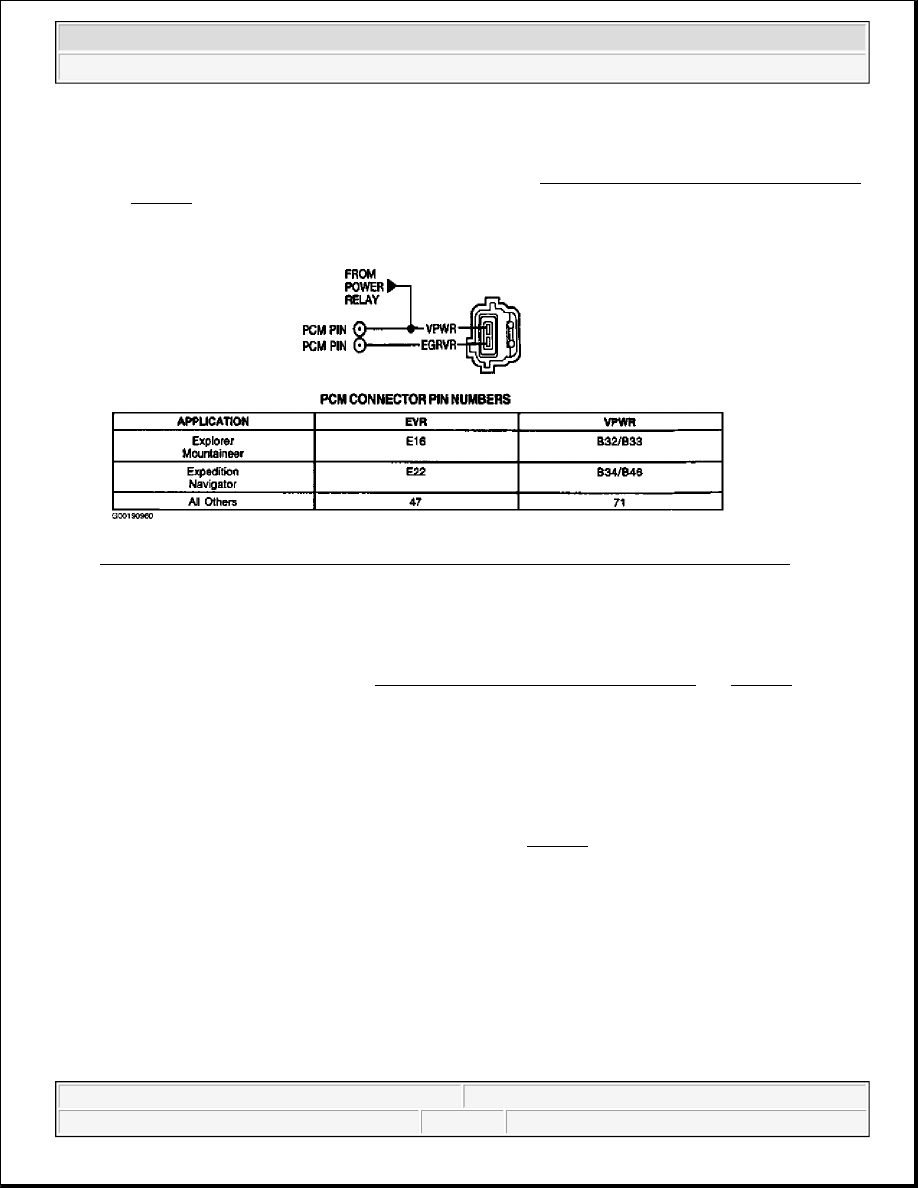Content .. 1509 1510 1511 1512 ..
Ford F150 Pickup. Instruction - part 1511

Disconnect scan tool from DLC. Disconnect PCM connector(s). Inspect connector for loose, damaged or
corroded terminals. Repair as necessary. Using a DVOM, measure resistance between negative battery
terminal and EGRVR circuit at PCM harness connector. See PCM CONNECTOR IDENTIFICATION
and Fig. 244. If resistance is more than 10 k/ohms, go to next step. If resistance is 10 k/ohms or less,
repair short to ground in EGRVR circuit.
Fig. 244: Identifying EGRVR Solenoid Wiring Harness Connector Terminals (All Others)
Courtesy of FORD MOTOR CO.
30) Check EGRVR Circuit For Short To VREF
Using a DVOM, measure resistance between EGRVR and VREF circuits at PCM harness connector (both
VREF circuits on 150-pin PCM). See PCM CONNECTOR IDENTIFICATION and Fig. 244. If
resistance is more than 10 k/ohms, replace PCM. If resistance is 10 k/ohms or less, repair short between
EGRVR and VREF circuits.
31) Check DPFEGR Sensor Output By Applying Vacuum With Hand Pump
Turn ignition switch to OFF position. Connect scan tool to Data Link Connector (DLC). Disconnect
pressure hoses at DPFEGR sensor. Connect hand vacuum pump to downstream connection at DPFEGR
sensor (intake manifold side or smaller diameter port). See Fig. 239. Using scan tool, access DPFEGR
PID from PID/DATA MONITOR & RECORD menu. Read the following DPFEGR PID values with
ignition switch in ON position:
z
DO NOT apply vacuum to sensor. Record DPFEGR PID value. DPFEGR PID value should be .2-
1.3 volts.
z
Using vacuum pump, apply 8-9 in. Hg (27-30 kPa) for a few seconds. DPFEGR PID value should
increase to more than 4 volts.
z
Quickly release vacuum. DPFEGR PID value should drop to less than 1.5 volts within 3 seconds of
releasing vacuum.
If any DPFEGR PID values are not as specified, replace DPFEGR sensor. If all DPFEGR PID values are
2003 Ford Pickup F150
2003 ENGINE PERFORMANCE Self-Diagnostics - CNG, Flex-Fuel & Gasoline